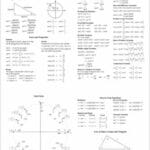This guide provides comprehensive information about pharyngectomy, a surgical procedure involving the removal of the pharynx (throat), most often performed to treat throat cancers. It aims to equip patients and their families with the knowledge they need to navigate this complex journey. For a broader understanding of mathematical concepts, explore mathiscool and delve into the complexities of trigonometry with our guide on the law of sines ambiguous case.
What is a Pharyngectomy?
A pharyngectomy is the surgical removal of part or all of the pharynx, a cone-shaped passage connecting the back of your nose and mouth to your esophagus (food pipe) and larynx (voice box). It’s a major procedure, primarily used to treat throat cancers. The pharynx plays a vital role in swallowing, breathing, and speaking, so its removal necessitates significant adjustments and rehabilitation. The extent of the surgery, ranging from removing a small tumor to a major resection requiring reconstruction, depends heavily on the stage and location of the cancer.
Why is a Pharyngectomy Performed?
The most common reason for a pharyngectomy is throat cancer. This includes cancers affecting the hypopharynx (lower throat), oropharynx (middle throat), and nasopharynx (upper throat). Rarely, a pharyngectomy may be necessary due to severe trauma or other conditions.
Different Types of Pharyngectomy
There are several types of pharyngectomies, each tailored to the individual’s specific situation:
- Partial Pharyngectomy: Removes only the affected section of the pharynx. This is often preferred for smaller, localized tumors, preserving as much healthy tissue as possible. Specific variations, like a partial hypopharyngectomy, concentrate on the lower throat.
- Total Pharyngectomy: Removes the entire pharynx. This more extensive procedure is typically necessary when the cancer is more advanced or has spread throughout the pharynx.
- Total Laryngopharyngectomy: Removes both the pharynx and larynx, resulting in a permanent tracheostomy (opening in the neck for breathing). This is the most extensive type and dramatically alters breathing and speech.
Diagnosis and Preparation for Pharyngectomy
Before a pharyngectomy, a thorough diagnosis is essential. This may involve biopsies, endoscopy, and imaging scans like CT, MRI, and PET scans. These procedures help determine the extent of the cancer and guide surgical planning.
Pre-operative preparations include fasting, medication adjustments, and consultations with the surgical and anesthesia teams. The anesthesiologist will develop a personalized anesthesia plan based on your medical history.
The Pharyngectomy Surgical Procedure
Performed under general anesthesia, a pharyngectomy typically involves an incision through the neck. The surgeon removes the cancerous portion of the pharynx, and possibly nearby lymph nodes. Depending on the extent of the surgery, reconstruction may be necessary using tissue flaps or grafts.
Recovery and Rehabilitation after Pharyngectomy
Recovery from a pharyngectomy is often challenging and involves intensive rehabilitation. You may initially have a feeding tube while your throat heals. Speech and swallowing therapy are crucial for regaining or adapting to new eating and communication methods. Long-term impacts may include changes in voice, swallowing difficulties, and the need for ongoing support.
Potential Complications of Pharyngectomy
Like any major surgery, pharyngectomy carries potential risks. These may include:
- Bleeding
- Infection
- Fistula formation (abnormal connection between organs)
- Swallowing difficulties
- Speech changes
- Seroma (fluid buildup near the surgical site)
Life After Pharyngectomy
Living with the effects of a pharyngectomy requires significant adjustments. Breathing, speaking, and swallowing may feel different. Support groups, therapists, dietitians, mental health professionals, and your healthcare team play crucial roles in your adaptation and long-term well-being. Advancements like transoral robotic surgery (TORS) sometimes offer less invasive options with potentially faster recovery. Ongoing research continues to explore ways to improve surgical techniques and rehabilitation methods, offering hope for even better outcomes in the future. Some experts believe that future advancements might involve personalized therapies, minimizing the impact on surrounding tissues.
What’s the Difference Between a Pharyngectomy and a Laryngectomy?
While both are head and neck cancer surgeries, they target different areas:
- Pharyngectomy: Removes the pharynx (throat). Impacts swallowing and may alter voice.
- Laryngectomy: Removes the larynx (voice box). Results in loss of natural voice and altered breathing.
Sometimes, both are necessary (laryngopharyngectomy). If cancer spreads to the esophagus, an esophagectomy might also be part of the treatment plan.
| Procedure | Target Area | Impact on Speech | Impact on Swallowing | Impact on Breathing |
|---|---|---|---|---|
| Pharyngectomy | Throat (Pharynx) | May be altered | Likely significant changes | Usually minimal |
| Laryngectomy | Voice Box (Larynx) | Loss of natural voice | Possible changes | Likely changes |
| Laryngopharyngectomy | Throat & Voice Box | Loss of natural voice | Likely significant changes | Likely significant changes |
What Happens if the Pharynx is Removed?
Pharyngectomy creates substantial changes:
- Breathing: A permanent stoma (opening) in the neck becomes the airway.
- Swallowing: The path between mouth and esophagus is reconstructed, requiring new swallowing techniques.
- Speech: If the larynx is also removed, alternative communication methods are necessary.
Recovery involves hospital stay, pain management, wound care, learning stoma care and new swallowing techniques. Intensive rehabilitation with speech and swallowing therapists is essential.
Note: This information is for educational purposes only and should not substitute professional medical advice. Consult a healthcare professional for any health concerns or treatment decisions.

















1 thought on “Understanding Pharyngectomy: A Comprehensive Guide for Patients and Families”
Comments are closed.